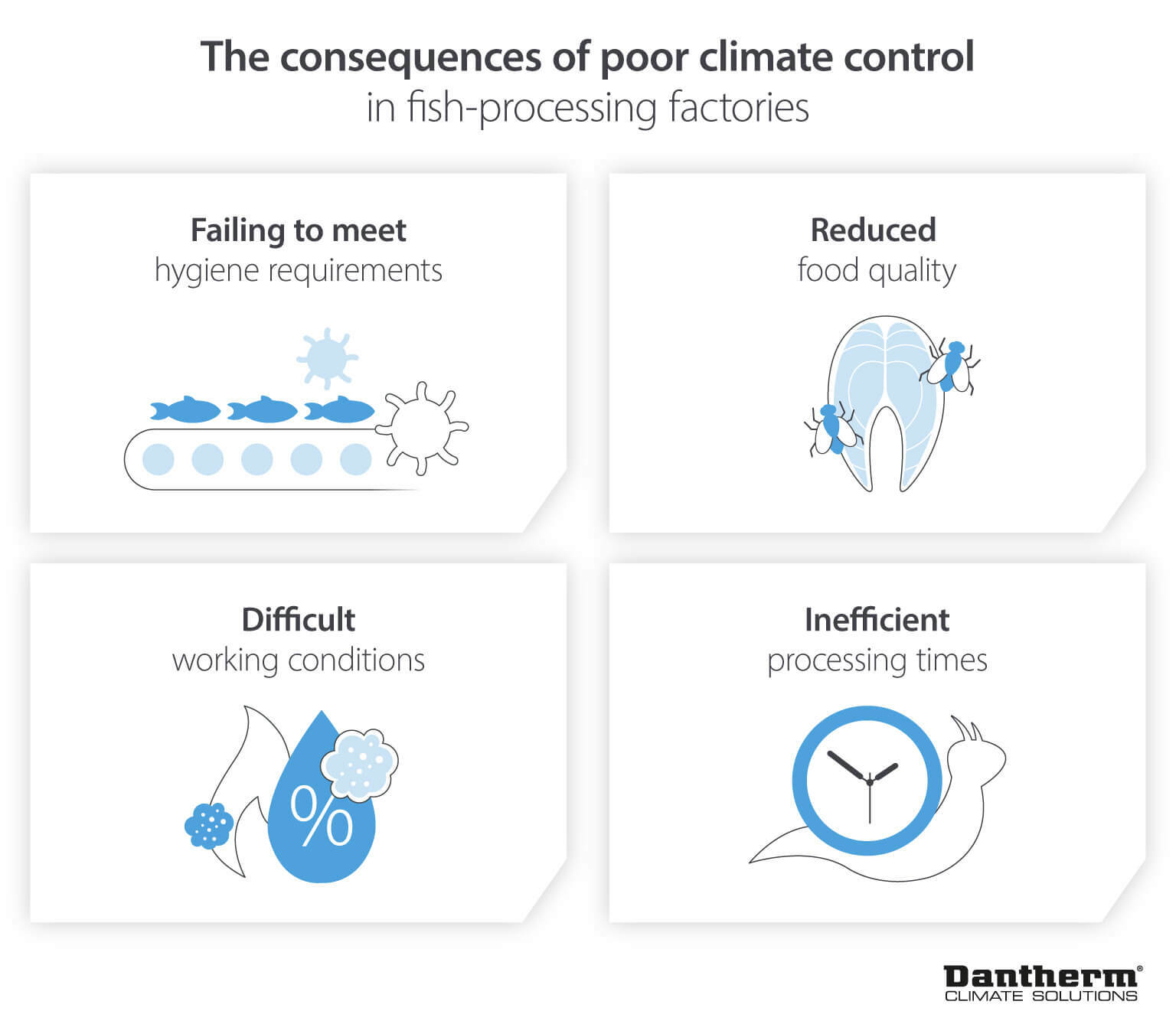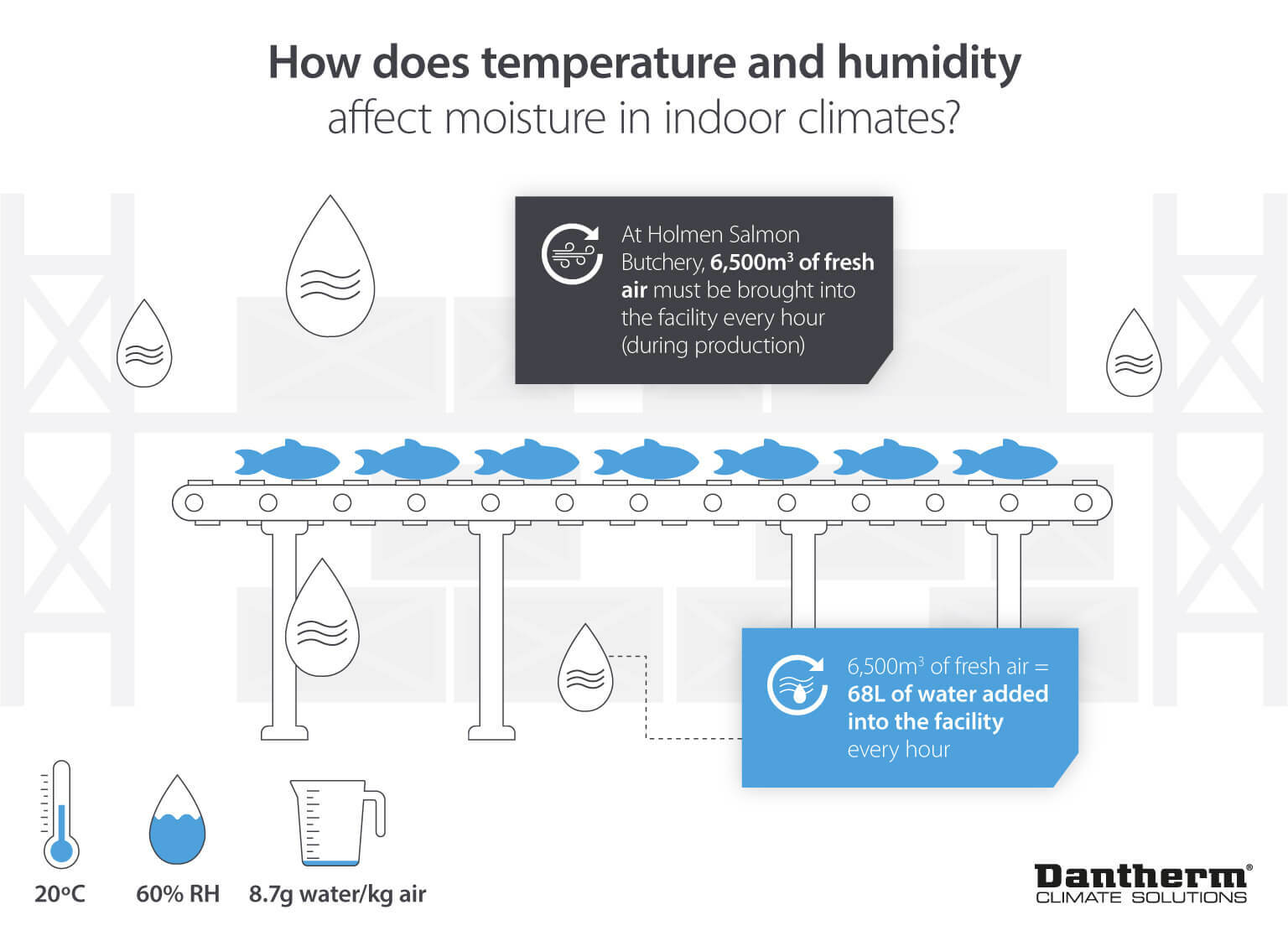Saturday, 03/01/2026 | 03:47 GMT+7
Fish farming, seafood processing and other forms of aquaculture are crucial to supplying people across the globe with fresh fish. With the growing number of land-based facilities managing the farming, butchery, filleting and storage of fish worldwide to meet ever-increasing demand, the need to achieve consistent indoor climates at all times is of paramount importance.

This is particularly prominent in locations like fish processing factories due to the low temperatures and moisture levels that must be maintained for the fish quality (between 8ºC and 12ºC and max. RH% 45).
There is a lot of excess water in the summer when hot humid air is brought into these low temperature/humidity conditions, and also a significant amount of cold water is used during operations. If temperatures and humidity are allowed to rise uncontrollably, it can lead to dangerously high moisture levels.

Precise dehumidification and ventilation keep the climate within acceptable boundaries throughout the various stages of fish processing. Using the right solution, the quality of fish is preserved, work can be conducted much more efficiently, and there is a greatly reduced risk of breaching hygiene regulations.
However, traditional desiccant dehumidifiers are known for high levels of energy consumption. Even though a condense dehumidifier unit consumes less energy in warmer temperatures, it is not effective in low temperatures and will not be able to maintain the demanded RH% at the low temperatures that must be maintained in the fish processing industry.
Drying with fresh air only or with a condense dehumidifier is therefore not an option and the desiccant dehumidifying process has the potential to use a lot of energy. And, at a time where energy prices are surging across Europe, this is understandably a key concern for fisheries.
While the contraflow condenses the air to a degree, the ice water condenses the air even further, and this alone will generate enough dry air to reduce the humidity within the fish processing plant for most of the year.
This is incredibly efficient, as this system means that the desiccant dehumidifier included in the DanX ECOline is only operating when it’s absolutely necessary to do so.

When the desiccant dehumidifier is needed, the surplus heat, generated at no additional cost from the ice production, is used to dry out the moisture from the rotor in the specially designed SD rotor dehumidifier, which would otherwise need to be heated using expensive electricity, gas or other energy sources.
Therefore, the energy cost associated with a powerful desiccant dehumidification system is drastically reduced all year round, saving fisheries substantial sums over time.
When the ice water condensation is enough and the desiccant dehumidifier is not operative, the process air will be as low as 5-6ºC, and need to be post-heated (using the surplus heat from the ice water process) to achieve a temperature slightly below the process room temperature (or lower if further cooling is needed).
Furthermore, when the desiccant dehumidifier is in operation, the ice water will effectively cool down warm air produced as a result of dehumidification, so the dry air entering the facility remains at the cool temperatures required for optimal performance.
Again, by harnessing this surplus heat energy rather than letting it go to waste, this reduces the energy demands of the system, increasing its energy efficiency even further. The result is significantly reduced energy consumption, while keeping the climate during all stages of fish processing exactly as it should be.
According to danthermgroup.com








 Webinar 2: “Financial Support for Energy Efficiency Enterprises – Opportunities and Challenges”
Webinar 2: “Financial Support for Energy Efficiency Enterprises – Opportunities and Challenges”
 Vietnamese enterprises achieve green growth and cut costs through energy efficiency
Vietnamese enterprises achieve green growth and cut costs through energy efficiency
 Capacity Building for Program Implementing Entity
Capacity Building for Program Implementing Entity
 Enhance Energy Efficiency Knowledge for Managers of Cement Industrial Enterprises
Enhance Energy Efficiency Knowledge for Managers of Cement Industrial Enterprises
 Capacity building for participating financial institutions in Ho Chi Minh City
Capacity building for participating financial institutions in Ho Chi Minh City
 Strengthening capacity for energy management officers of local government agencies
Strengthening capacity for energy management officers of local government agencies
 Steel Enterprises Saving Energy and Enhancing Competitiveness
Steel Enterprises Saving Energy and Enhancing Competitiveness